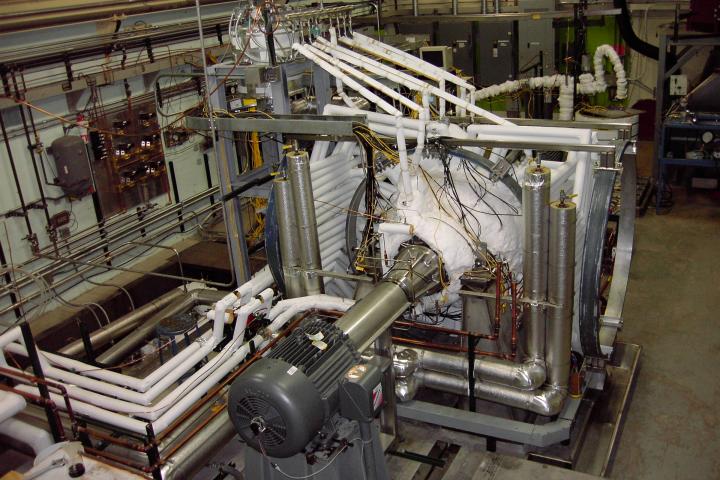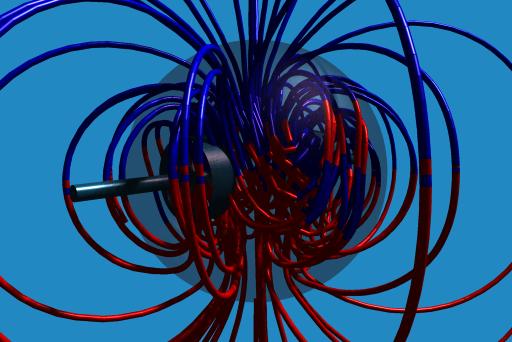Experimental dynamos
We are involved in analysing results from the Madison Dynamo Experiment. In particular we are interested in understanding the role played by turbulent fluctuations (which are difficult to model numerically) on the dynamo process.
The Madison Dynamo Experiment is a one-metre-diameter sphere of flowing liquid sodium. Two impellers drive an axisymmetric velocity field in the sphere, a velocity field that, in a mean sense, is expected to magnetically self-excite at sufficiently high magnetic Reynolds number. Magnetic fields can be applied to the sphere by two sets of external magnetic field coils. Magnetic fields are measured within and without the sphere by Hall-effect sensors.
The Madison Dynamo Experiment is used to study mean-field magnetohydrodynamics (MHD), the role of fluctuations in velocity and magnetic fields in generating and destroying magnetic fields, and the transition to magnetic self-excitation. These studies are complemented by simulations of the experiment. The simulations are used to explore the nature of hydromagnetic turbulence in the experiment, the dependence of critical magnetic Reynolds number on fluctuation levels, and kinematic dynamo theory.
Current research activities involve the exploration of the means by which fluctuations have a detrimental effect on magnetic self-excitation, and what the experiment and its simulations can tell us about geomagnetic dynamos and the nature of the fluid dynamics of the Earth's core.
People involved: Andrew Jackson.


